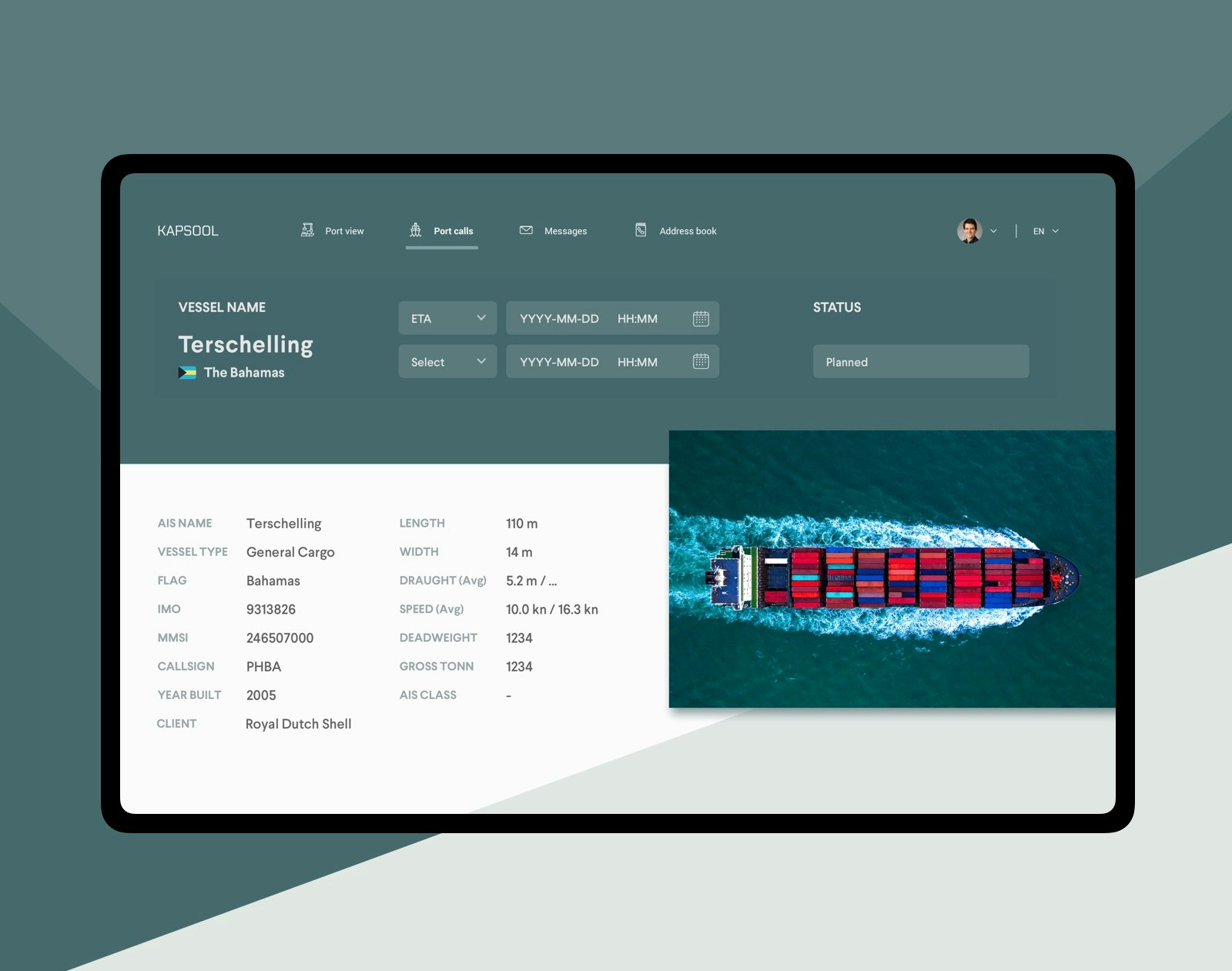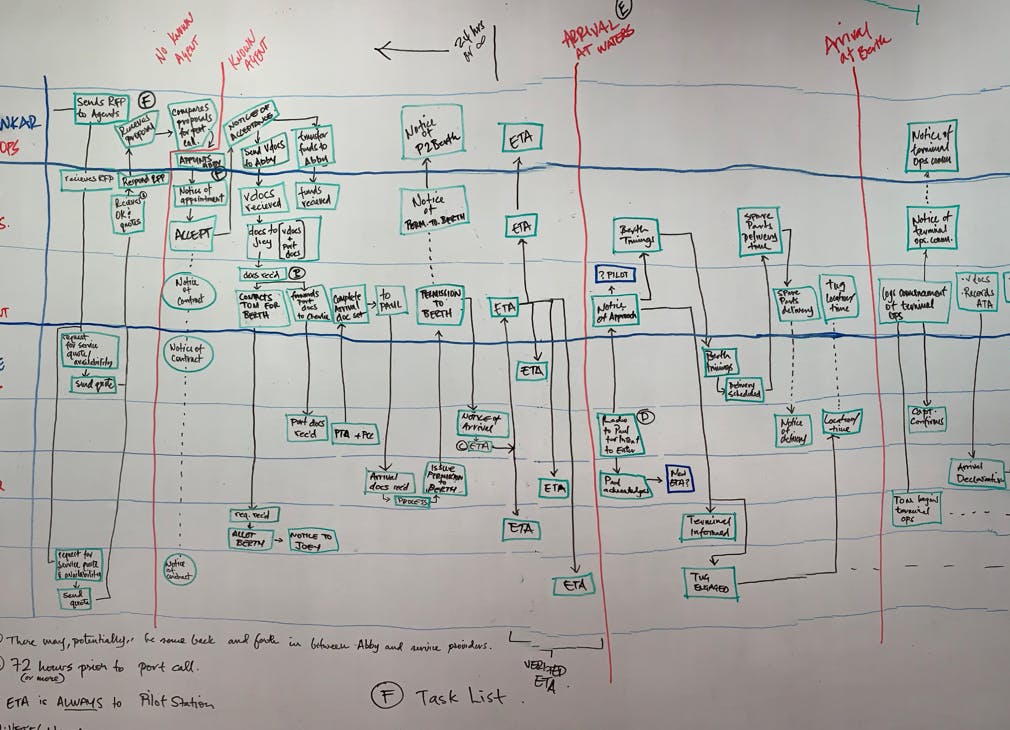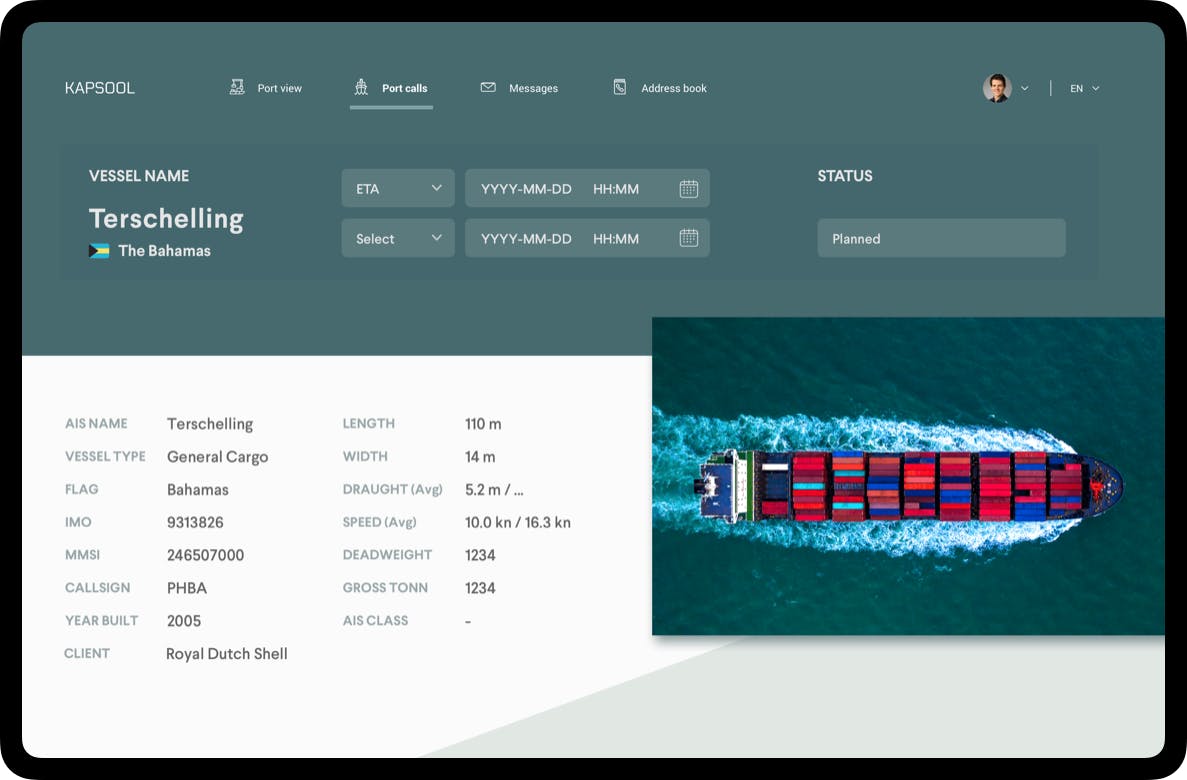Digitalize the existing management process for cargo vessels, to optimize time and resources.
MING Labs Case Study: Kapsool – Transforming maritime
Kapsool: Transforming maritime
An innovative management tool to
revolutionise the cargo and shipping industry

Platform is in demo mode for now and received plenty of great feedback. We are working on the second release already.
UX/UI design, web development
Did you know that when a container ship comes into a port, there are up to 30 different parties involved in the process? And all the documentation is currently still done on paper? And that there is a ton of manual work involved in such a port call? We did not either. That is, until we started working with the team at Kapsool — a company founded within the ING Venture Lab. Entrepreneurs Antonio DeLorenzo and Gijs Hoogeveen researched the topic in detail, found enormous potential for efficiency gains and came up with a suggestion. Before jumping straight into building the product, we started with a validation-driven approach.
The main goal of our first iteration was to build a solid prototype that helped the Kapsool team to validate their initial assumptions.
If their intuition and research was correct, they would be able to get an innovation grant that would allow them to take the project to the next level and naturally we wanted to help them succeed.
Since the Kapsool team had already done the initial research, we started by collecting and analyzing all their data inputs as well as their summaries of this research. Based on that, we have organized a workshop with both team members in order to have a clear statement of their target audience and consequently defining personas and use case scenarios.
With all this information and definitions, we were then in position to start working on the information architecture, wireframes and visuals. The end result of this intense workshop and work to the final prototypes was very positive and the ability to develop the first MVP.

With the very positive feedback received for the overall concept, it was then time to start working on the MVP. In order to get an MVP as solid as the initial prototypes, we had to do some refining of the core features to be developed. Once again, we joined forces with the Kapsool team to define the features and the scope that would drive the MVP. We have finalized the user stories and with this in mind, we created the matching wireframes and started to create the visual elements that would comprise the platform.
Given the innovation factor in this platform, which was being planned to cover a wide range of aspects of cargo management, our software developers were starting to lay the groundwork of what would be the coming version of this product.
Some of the initial set of features would empower all platform users to administrate a broad list of profiles and contacts from vessel owners, agents and individual suppliers. It was meant to be the de facto place for finding all vessel and navigation documents, permits and collected visas.
And as one of the key features for these document management is the traceability of all documents and signatures the expected amount of data to be handled was quite large which we had to keep that in mind in our proposed designs as well.
Finally, one of the other key features is that this platform was meant to serve as the main point of contact for all the communication, discussion and the transactions between the agents and all different parties involved.

One of the first ports to test this brand new MVP was Amsterdam’s. The Kapsool team took the project and demoed it around, and with this, more feedback started to arrive. Amongst positive feedback and enthusiastic responses, there were also some hints on trying to target a slightly different audience — the suppliers.
This new point of view intended to improve suppliers’ financial stability, by ensuring that all business dealt through Kapsool had a faster money return and a higher quality on the goods delivery. So, once again, we sat down with Kapsool team and devised the user stories and the updated visuals for the new approach, which they are currently testing.

- It takes more than just parking the vessel in the port for your goods to arrive
- There is more than just parked vessels on the coast of singapore. There is a whole industry revolving around these and it has a great degree of complexity, which we got to learn about through this project
- Since we had to work closely with the developers based in our Shanghai office, our iterations had to be fast, concise yet precise. With Kapsool we had the chance to test our skills to the max
- Working with people passionate about their project is contagious